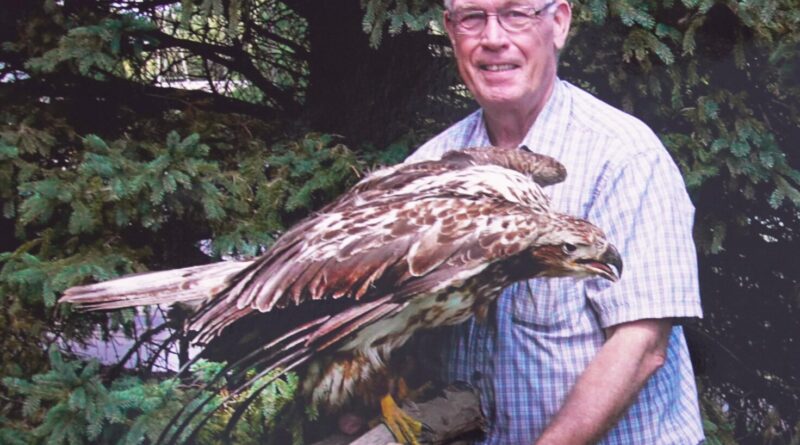Letter: For 50 years, I have watched lead poisoning kill eagles and other wildlife. We can do better.
DETROIT LAKES – The curse of lead poisoning in wildlife followed me throughout my DNR wildlife conservation career – from 1974 to 2018 until I retired.
I picked up a dying bald eagle on Nov 14, 1974, at the Lac qui Parle Wildlife Refuge where I worked as the refuge’s assistant manager.
It showed signs that I later realized were signs of lead poisoning. It stopped on the road and forgot its wings and could not fly. I threw my jacket over the bird, picked it up, and took it back to my van.
I placed the soft eagle on the car seat next to me for the ride back to the refuge headquarters. I made arrangements to take it to the U of MN Raptor Center the next day, but it died overnight.
I was a licensed taxi driver at the time, so I took the eagle on display at the refuge, and it is now on display at the DNR headquarters in St. Louis. Paul.
In 1979, four years after I found the dying eagle, I read an article in the Journal of the American Veterinary Medical Association about a bald eagle that had died of lead poisoning at a waterfowl refuge in Maryland. . The eagle had swallowed 75 pieces of lead gun. The pellets were taken from the carcasses of Canada geese killed or injured by hunters or taken by geese in fields where the birds were hunted, injured, and hunted by eagles.
The dead eagle I found in 1974 was the first eagle I know of from Minnesota that showed signs of lead poisoning. I wondered if the eagles of Lac qui Parle were getting lead poisoning from dead and injured Canada geese?
This was an example of where I used a “connect the dots” strategy between reading a scientific report on lead poisoning in an eagle in Maryland and realizing that a dying eagle I took in November 1974 may have they are the first victims of lead poisoning. known from Minnesota. I realized that the federally threatened eagles at Lac qui Parle may be dying from lead poisoning.
November 14, 2024, marked 50 suspicious years since the first bald eagle was found dead in Minnesota from lead poisoning.
So, my question for Minnesota hunters and conservationists is this: How many years must pass before they decide to switch to non-toxic ammo for hunting? Do we have to wait another 50 years? Why are we still polluting our private lands, wilderness areas, state wildlife management areas, and national forests with toxic lead from hunting ammunition?
Non-toxic ammo is now readily available and works very well in the field. Prices are competitive, and in some cases, cheaper than lead ammo.
The use of lead ammunition for hunting is not a right. It has nothing to do with the second amendment. It pollutes the outside. It has become a “black eye” for hunters who don’t seem to care if they pollute the outdoors with toxic metal “forever”.
I would like to recognize hunters as conservationists. It would be in their best interests if they would take the initiative to switch to non-toxic firearms. However, too many hunters don’t seem to care that they are causing “financial damage” to other species of wildlife such as the bald eagle, golden eagle and other raptors.
I am expressing these concerns and opinions not as a hunter against people. I have been hunting since I was 10 years old growing up on my family’s farm in Iowa. I simply believe that hunters should show common sense and concern for all wildlife and preserve the value of our outdoor spaces – public and private – that we enjoy for hunting.
My concerns about this issue go back to the “Conservation Pledge” I memorized in sixth grade. It was in a conservation brochure distributed by the Iowa Conservation Commission. The Conservation Pledge was published in 1946 by Outdoor Life magazine:
“I give my pledge as an American to faithfully save and protect from destruction the natural resources of our country – its soil and minerals, its forests, water and wildlife.”
Is it hard to ask today’s hunters to obey the Conservation Pledge written by the visionary conservationists at Outdoor Life 78 years ago?
(Before retiring in 2018, Carrol Henderson spent more than 40 years as director of the Minnesota DNR’s Nongame Wildlife Program)
#Letter #years #watched #lead #poisoning #kill #eagles #wildlife
